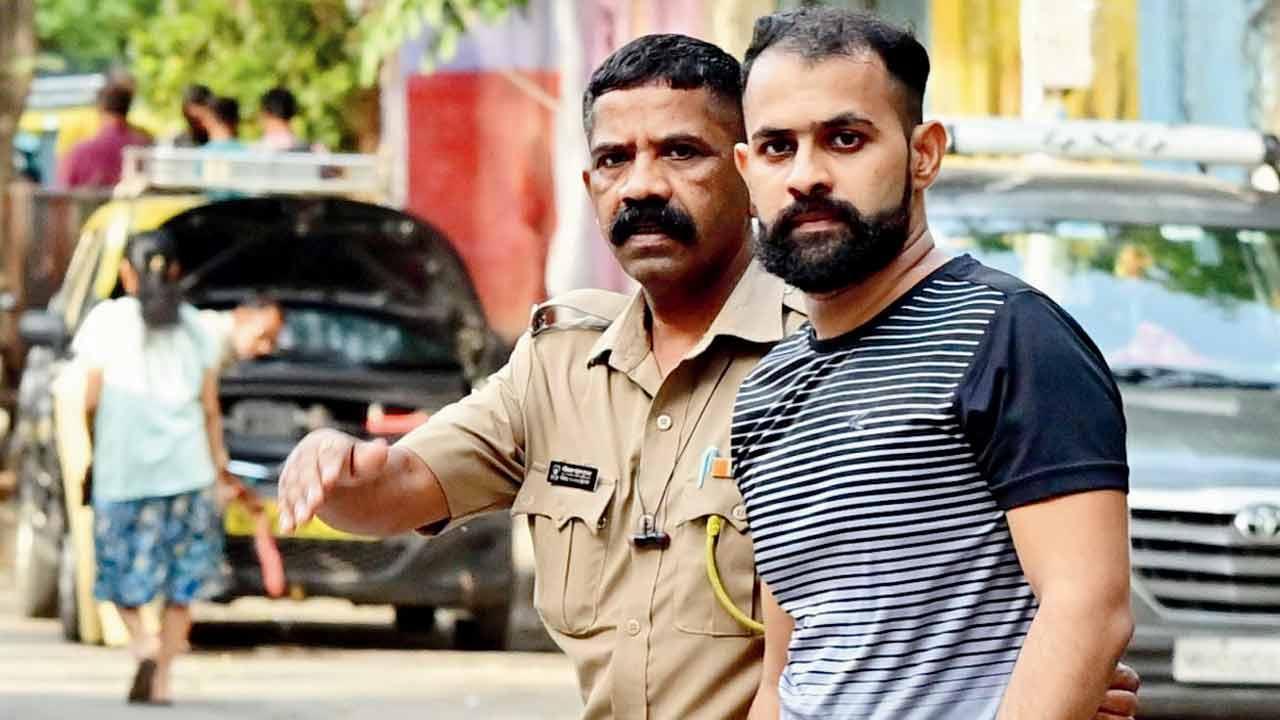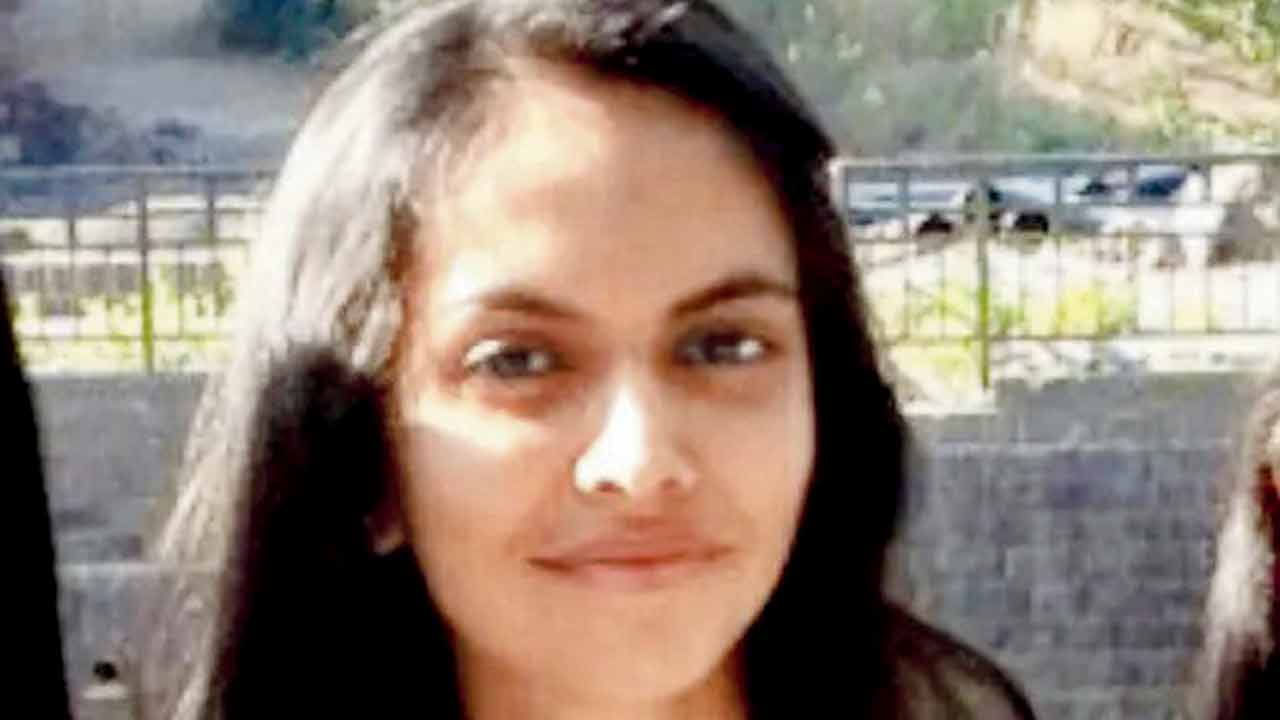Sessions court says accused could not support statements with evidence or cogent explanations

Accused Siddhesh being taken back to Arthur Road jail. Pic/Shadab Khan
The sessions court, while granting life imprisonment to Siddhesh Tamhankar and Khushi Sahjwani in connection with the murder of Kirti Vyas, finance manager at BBlunt salon, considered several key pieces of evidence. The court noted the bloodstains found inside Sahjwani’s car, which matched the DNA samples of Vyas’s parents. Additionally, the court thoroughly examined CCTV footage from March 16, 2018, which confirmed that both accused picked up Vyas from her Grant Road residence. This footage contradicted the accused’s claim that they dropped her off between Grant Road and Mumbai Central, from where she supposedly boarded a train at Grant Road station. The court detailed these findings in its 115-page order granting life imprisonment to both accused.
ADVERTISEMENT

Kirti Vyas, the finance manager of the salon chain who was killed by Siddhesh and Khushi Sahjwani
Foundational facts
Judge Deshpande’s order noted that both accused took Kirti in their car on March 16, 2018, but never dropped her off anywhere, leading to her disappearance. The court clarified that the prosecution need not prove how Vyas was killed or where, as this information is known only to the accused. “On the contrary, it is for both accused to explain with cogent circumstances what happened to Vyas when their theory that they dropped her somewhere between Grant Road and Mumbai Central railway stations or at Reliance Mall, is not supported by any evidence or cogent explanation,” the bench observed.
Lack of evidence
Both accused told mid-day on Tuesday that they had dropped Vyas near Grant Road railway station and she boarded a train from there. However, no evidence was found to support their claim. “The true rule is that when accused do not provide any explanation for facts that are especially within their knowledge and could support a theory compatible with their innocence, the court can consider their failure to provide an explanation as an additional link that completes the chain of evidence. When it is impossible for the prosecution to provide wholly convincing evidence on certain issues within the knowledge of the accused, it is the responsibility of the accused to present evidence on those issues if they wish to escape conviction. Nothing of the sort has occurred in this case.” the court order read.
The accused have also claimed that the CCTV footage was manipulated like the forensic report of the bloodstains found in the case. To this, the court said, “It is argued that certain materials, such as the CDRs collected during the enquiry, were not produced and, therefore, an adverse inference should be drawn against the prosecution. However, nothing prevented the accused from presenting evidence in their defence by calling for the original CDRs, soft copies, hard copies and CCTV footage they have challenged. They did not petition the court for this evidence nor presented any in their defence. Additionally, it is argued that Khushi’s car was washed multiple times, so there was no likelihood of any blood traces remaining. In this situation, nothing prevented accused no. 2 [Sahjwani] from calling the car washer as a witness to tender evidence in her defence.”
Car location
“The prosecution has successfully proven beyond reasonable doubt that Vyas was in the company of both accused in Sahjwani’s car,” stated the court. “Her mysterious disappearance from the car is also proved beyond reasonable doubt. Hence, only the accused know what happened with Vyas inside their car and the non-availability of corpus delicti will not affect the merits of the case.” The court highlighted the absence of satisfactory explanations from both accused regarding the presence of their car in various CCTV footage locations on the morning of March 16, 2018. It further noted the lack of justification for the car’s sightings at specific locations during late hours, corroborated by call detail records and tower locations of the accused’s mobile numbers.
Possible motive
In its order, the court stated, “There is substantive evidence to prove that the last date for the termination of Tamhankar’s employment was March 16, 2018, and the notice to that effect is the best primary evidence.’ Witness Varsha Khanolkar, admin head and alternate director of BBlunt, testified about the company’s initiation of interviews to replace Tamhankar after his termination,” the court order read.
“Satyajeet Thakur, director of BBlunt, further testified that he had entrusted Vyas with the authority to handle Tamhankar’s termination and had approved his dismissal. This stigmatic termination would have closed the doors to future prospects for him,” the order continued. Tamhankar, however, disputed this, telling mid-day on Tuesday that Vyas didn’t have the authority to terminate him as his reporting manager was someone else.
Fraud angle
The order further states, “Moreover, the crucial reason was his fear and anxiety about being separated from Sahjwani.’ Khanolkar also mentioned in her evidence the bogus receipts issued by Sahjwani to students using a fake receipt book, when BBlunt had never prescribed any fees or issued any receipt book. This clearly proves that Sahjwani collected substantial money from the students of BBlunt Academy but did not deposit it in BBlunt’s account, instead keeping it for reasons known only to her. She [Sahjwani] was under the dread of divulgence of her fraud being exposed, and Vyas, as the finance manager, was responsible for overseeing all financial aspects. This provides the motive for the mysterious disappearance of Vyas.”
The court concluded that all offences had been proved beyond reasonable doubt. ‘It is not a straightjacket formula that the case based on circumstantial evidence is a weak case for conviction and it can never be proved beyond reasonable doubt. I have given detailed reasons regarding my view before holding both accused guilty for the offences proved against them,’ the order read.
‘Vyas’s kin have suffered’
Deshpande’s order emphasises, “It is a fact that her parents are old and she has an unemployed sister. All of them were dependent on Vyas’s earnings. As such, she was the financial pillar of her family and ever since her disappearance, her family have faced difficulty and misery that cannot be explained in words. Even if both accused were directed to pay her compensation, that would not suffice. The family background of both accused is such that they cannot pay any compensation to Vyas’s family. Tamhankar has been in jail since his arrest and hence has no independent source of income to pay a fine or compensation.”
 Subscribe today by clicking the link and stay updated with the latest news!" Click here!
Subscribe today by clicking the link and stay updated with the latest news!" Click here!







